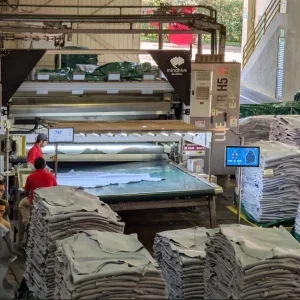By Maxim Siniak, PhD., Business Development Manager at Datacolor
Working with leather poses many unique color challenges. Every hide has natural variations in grain and texture that can have significant impacts on the final color. The finished product is also very sensitive to humidity, temperature, sunlight and many other environmental factors.
All these variables mean that leather dye formulas must be constantly adjusted to achieve consistent results, despite any differences between hides. In addition, master samples must be carefully stored to preserve their color accuracy.
“There’s a lot that can go wrong without color management and effective communication,” said Salvador Ortiz, color, material and finishings (CMF) designer at Aeristo, a fine leather supplier based in Texas’ Dallas-Ft. Worth region. “The same color might be applied in different tanneries that got hides from different suppliers. We were regularly rejecting hides for having too much color variation.”
Meeting Exacting Standards
Aeristo serves a niche market of high-end customers, producing high-quality luxury leather for the aviation and hospitality industries, as well as classic cars and yachts. In addition to working with more than 2,000 regular color standards, the company is frequently asked for custom colors or precise matches.
“We’re in a VIP industry with no margin of error when it comes to color matching. Our customers know exactly what they want and they expect exactly what they chose. So our tolerances are much stricter than most other markets,” Ortiz said.
Although the company had already seen some improvement from using digital color measurement devices like spectrophotometers, precise color matching continued to be challenging. One issue they had faced was that different vendors were using different brands of instruments. A larger problem, however, was an ongoing need to ship physical samples back and forth, often between continents. This could happen several times if a color accuracy issue came up — with additional delays incurred if a supplier was located in a distant time zone.
Getting Connected
Ortiz and his team began looking for a way to communicate with their suppliers more effectively. They eventually chose Colibri®, a digital color communication platform that enables more seamless color management throughout their entire supply chain.
Although Aeristo’s primary interest was to improve their connections with suppliers, they quickly discovered that a digital workflow offers them other advantages. They now have a platform that allows them to specify standards, with full control over which colors each supplier has access to.
In addition, they’ve also learned that a cloud platform makes it easier for tanneries to perform color measurements in the system and generate reports at any time. Now, the Aeristo team can review them in the office or from remote locations.
“We had tried other software in the past, but the ability to get color-matching reports in real time was game-changing,” Ortiz explained. “We’ve been able to eliminate many time zone and shipping delays and have the added value of control and standardized production reports. We can see how our suppliers are developing each color and even send them a pre-approval before we see it.”
Internally, the transition to digital processes went very quickly. Ortiz and his team had previous experience with the hardware and were able to train other departments on the software platform in about six weeks.
But getting their suppliers to adopt the system required a bit more effort.
“Sometimes we encountered resistance to the new process from the tanneries. It took some time to convince them. But after they realized how easy it was going to be, they saw the benefits and decided to go with it. Once they understood what we were doing, they even tried to encourage other customers to use the same color management tools,” he said.
Process Improvements
Today, Aeristo’s color process begins with the in-house development of digital and physical master samples, which are sent to one or more suppliers for production. Real-time reports are sent by the tanneries, eliminating the need for physical samples to be shipped back until the color is within the required tolerance and approved by Aeristo.
Although the platform streamlines approvals, it doesn’t replace traditional methods. Aeristo still performs a visual inspection of every physical sample they receive in a light booth to double-check the results. About 99 percent of the time, they find that they’re getting exactly what they expected based on the supplier’s reports.
“We’ve cut our production time by at least 50 percent, but it could be even more because we now have 40 to 50 percent fewer rejections,” Ortiz said. “Now we’re working to implement this process with our clients on the front end so we can show them their colors are correct, even before they see the actual production.”
Toward a More Colorful Future
Digital color management created more possibilities for Aeristo than the company expected when they started looking for a better communication solution.
“For the first time in 30 years, we’re talking about standardizing colors. Even if we have hundreds of thousands, we now know that we can set a real absolute value. The dye lots won’t dictate the route of our colors anymore. We will,” Ortiz said.
The benefits haven’t just been limited to the color team. Time and quality improvements have created a positive ripple effect throughout the whole company.
“Better color management isn’t just making my life easier; it’s improving our entire business globally,” Ortiz added. “The quality department is spending less time making color tests and customer service doesn’t have to handle color issues anymore.”






